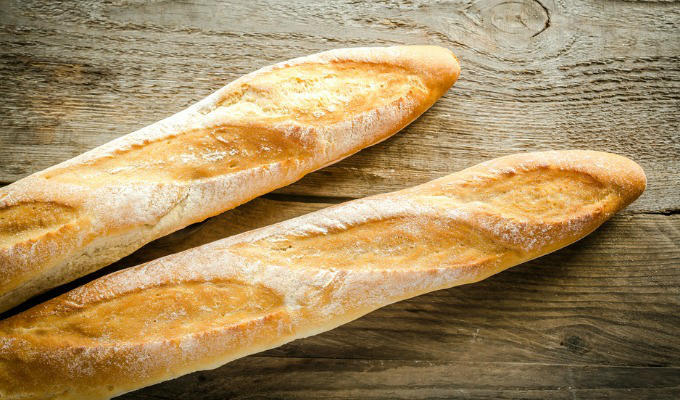The Perfect Baguette: 4 Tips From Jim Lahey
A good baguette is one of the hallmarks of a skilled baker. What makes a good baguette? We asked expert baker Jim Lahey, owner of Co. and Sullivan Street Bakery for his input. According to Jim, a good baguette is made just as any other good bread is made: by learning a bit about the science and technique of bread-baking and by using high-quality ingredients. There are a few things, though, that make the baguette unique; a good baguette should have a light golden to dark brown crust that measures about one to three millimeters in thickness and a light, uniformly-porous interior.
How do we achieve this? Jim has four expert tips to get us started:
Use a No-Knead Method
To make a proper baguette, avoid kneading the dough. Instead, fold the dough over at least two times before shaping the loaves.
Use the Right Amount of Water
Different flours absorb water differently. With practice, you'll learn how to identify how much water each particular flour needs. To achieve the proper baguette texture you want your dough to be hydrated to the point that it doubles (or more than doubles) during the fermentation (or first rising) period. If you notice that your dough didn't double, try adjusting the water next time.
Don't Overproof Your Dough
After you shape your dough, you'll leave it to proof (or rise) again. A properly-proofed baguette will be just shy of doubled in volume.
Use the Couching Method
When it's time to proof your baguettes, they need to be placed somewhere that gives them enough side support to hold their general shape. You can purchase a special baguette pan or baker's linen for couching purposes.
A good baguette takes time but with a little practice and these four tips, you'll be baking bread like a pro in no time.
Click here for the Anyone-Can-Make Great Crusty Baguettes recipe
Kristie Collado is The Daily Meal's Cook Editor. Follow her on Twitter @KColladoCook.
